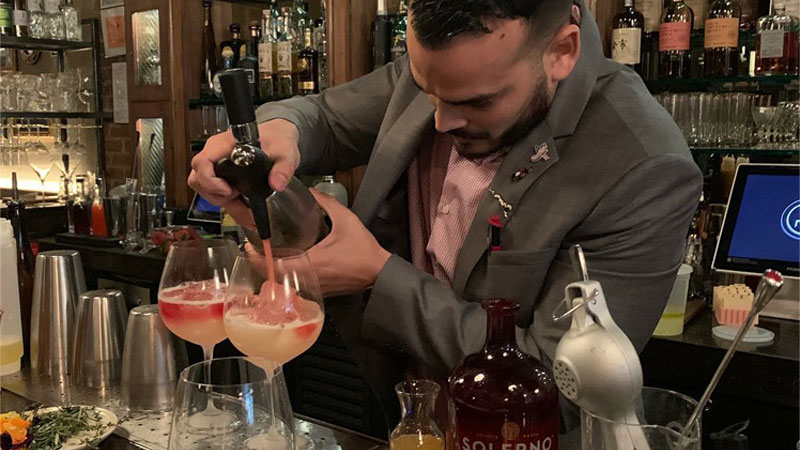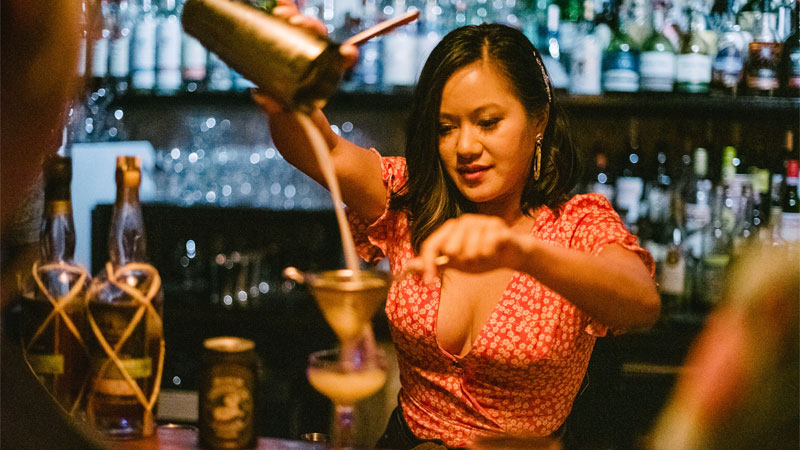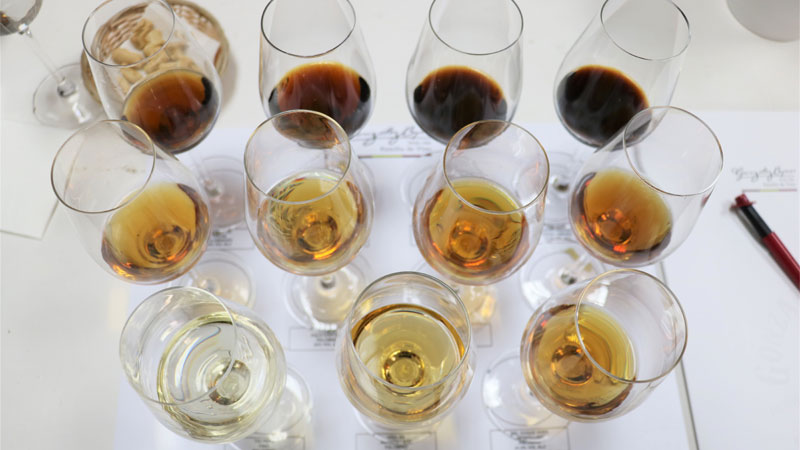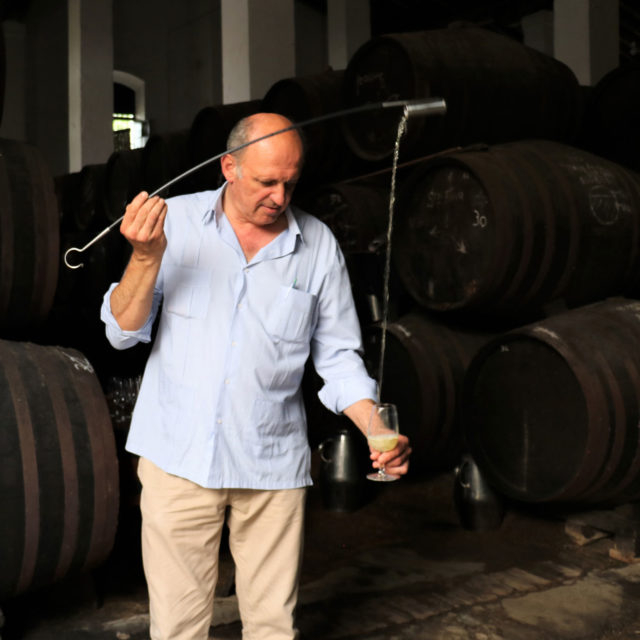Sherry has roots in American drinking culture at least as far back as our founding fathers and was readily found in the mid-1800s, among the very first wave of cocktails. Yet it has largely struggled to gain its footing in the modern world despite its full flavor, low-ABV appeal, and its unparalleled ability to pair with a broad range of cuisines.
Talk to many bartenders and sommeliers, though, and sherry is often touted as one of their favorite drinks categories. Yet gains have been hard to come by. According to IWSR Drinks Market Analysis, sherry grew by just 1 percent in the U.S. from 2017 to 2018, and is projected to grow at a mere .3 percent CAGR in the five-year period from 2018 to 2023.
However, sometimes all it takes is a spark, and the exciting ways sherry is now appearing on cocktail menus and on bartenders’ social media feeds may help propel its use by the growing ranks of home bartenders who are experimenting with new products and flavors as they look to master the craft of cocktails. Could it be those budding talents who help bring sherry back to its former glory?

The Sherry Cocktail Classics
“At the start of the exploration of the Americas and cross-ocean travel, sherry was the ideal wine as it traveled well,” explains Chantal Tseng, U.S. Sherry Week ambassador. As the colonies and later the country took root, sherry was seen as a fashionable import, leaving it well primed for the advent of accessible ice and the dawn of cocktails as we know them today.
“The Sherry Cobbler is the cocktail that gave birth to sherry in the cocktail world,” says Javier Ortega, bartender at Libertine Social in Las Vegas and the 2019 winner of the U.S. Tio Pepe Challenge cocktail competition. “It predates most cocktails as we know them, believed to have originated around the 1830s, and alongside the Mint Julep played a formative role in popularizing the use of ice to cool drinks. Because of its simplicity — sherry, sugar, and citrus, shaken, poured over crushed ice — it still remains a great cocktail to introduce people to the sherry world.”
Not only did it help spearhead the use of ice in cocktails; Tseng says it also “led to the invention of the straw.” She adds, “It was a star and widely available, becoming the most popular drink in the U.S. in the mid-to-late 1800s.”

Bringing the Classics Home
The Sherry Cobbler may be one of the most refreshing drinks on the planet. Start a summer brunch session with one of these and never wander astray with a Mimosa again. To make one, just muddle a few orange slices with sugar or simple syrup, shake with a hefty dose of amontillado sherry, pour over crushed ice, and garnish with berries and mint. No real recipe required.
One of the most popular sherry classics is the Adonis, made with a two-to-one ratio of fino sherry to sweet vermouth, or sometimes as a 50-50 split, and a couple of dashes of orange bitters. “The Adonis is rich and comforting, it has a long finish, it’s a big hug on the inside,” says Chau Trann, co-owner of Burrow Bar in Sydney. There’s also the Bamboo, a 50-50 mix of fino sherry and dry vermouth with a few dashes of both Angostura and orange bitters. Both are complex and rewarding drinks, offering the depth and sophistication of a Manhattan or a Martini while slashing the alcohol content.
In fact, sherry works wonders in any number of low-ABV libations. “It’s low-ABV, but it still lends a ton of flavor,” Tran says. “Sessioning sherry Highballs while the sun is out is absolutely perfect.”
Sherry is made to be enjoyed as the weather heats up; just consider that it comes from the hot, dry climate of Andalucia. “I find the minerality of sherry a great element and jokingly sometimes refer to fino and manzanilla sherries as my Gatorade,” Tseng says.
The richer sherries on the spectrum, such as oloroso and even cream sherries, don’t need to be relegated to wintertime consumption, either. “Their ability to add a great savory complexity to tropical rum cocktails is a no-brainer,” Tseng says. “They have a spice character that is delicious mixed with dark rums and citrus.”
Despite its prevalence as a versatile bar staple at the turn of the 20th century, sherry suffered a string of setbacks, sparked by Prohibition and worsened by the diminished quality of what was made available to the American market, or what Tseng refers to as conglomerate producers “dumbing down” their products. Soon, those who missed the good stuff were gone, and the only sherry wine many U.S. imbibers were familiar with was either the overly sweetened or cooking varieties. “I feel like sherry, especially in the U.S., declined due to people not knowing much about its rich history, styles, and flavor profile,” Ortega says.

More Ways to Use Sherry
Sherry’s breadth of styles offers near limitless ways to use it. “I love sherry with coconut; for example, I love coconut oil fat-washing it and making a sour riff. It’s delicious,” Tran says.
Ortega’s winning cocktail in the Tio Pepe Challenge — the fino sherry from González Byass is the most widely sold sherry in the world — was, of course, a bit more complex than that. Named for his daughter Sophia, the drink used sherry as its base, with blood orange liqueur, lime juice, sparkling hibiscus water, and a kumquat, rosemary, and thyme syrup. At the bar, he’ll keep things simpler to introduce sherry to guests. “As a fortified wine, sherry can be substituted for any vermouth in many classic cocktails, and this is often the way I approach it at my bar,” Ortega says.
The addition of a single bottle of sherry to your home toolkit provides a plethora of new cocktail options based on what else you already have on hand. For Tseng, a few of her favorite partners are tequila and agave spirits, thanks to their savoriness. She also counts aromatized wines and amaros as ingredients that play particularly nicely with sherry.
“But I mix all kinds of sherry with all kinds of spirits from vodka and aquavit, to gin, whisky, and Chartreuse,” Tseng says. “While it is certainly ideal to limit our shopping excursions [during the pandemic], it is comforting to know you can mix a dry sherry with pretty much every base cocktail ingredient.”
And if you did plan on nabbing a single bottle for your bar shelf? “Amontillado is easy to get your hands on and is a great staple in the home bar pantry,” Tran says. “I love it with tonic or sparkling water if I want something tall and refreshing, but equally, I’ll mix it up with other booze to make something a little funkier and to add a light sweetness, but not make it thick in texture.”
Tseng agrees with the sentiment. “For cocktails, the most versatile is a dry yet oxidative style like amontillado, and the same goes for food pairing,” she says.
Sherry, indeed, is a food-pairing dream, and one you can easily work with around the house. “It pairs incredibly well with spices, strawberry, cheese, and chocolate. It’s so versatile,” Tran says.
“Sherries are perfect partners with seafood, ham, anything smoky, and also pair well with tomatoes, olives, and pates,” Ortega says. “The fun part about this category of wines is you can base a whole meal on sherry because of its different styles.”
For Tseng, that’s a key point in how sherry should be viewed, and how the category could grow in the future. She hopes it’s seen as “an exceptional wine that has brilliant versatility in food pairings,” as opposed to being boxed in as a subcategory within the world of fortified or dessert wines.
As a versatile cocktail ingredient, and a low-ABV sipper with food pairing versatility, it can’t be beat. For those reasons, sherry has earned its place in the home bar — and as drinks pros will tell you, it won’t disappoint.
This story is a part of VP Pro, our free platform and newsletter for drinks industry professionals, covering wine, beer, liquor, and beyond. Sign up for VP Pro now!
